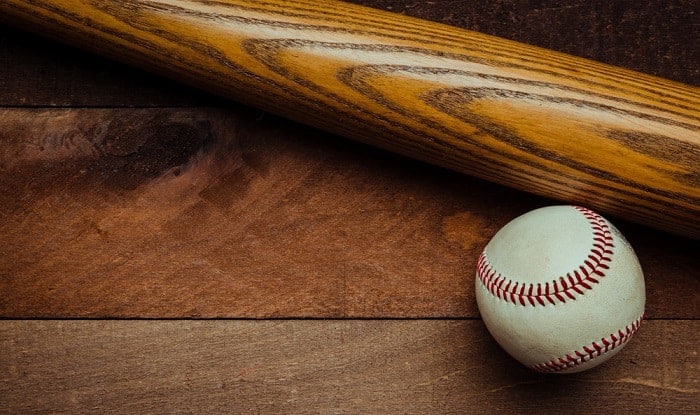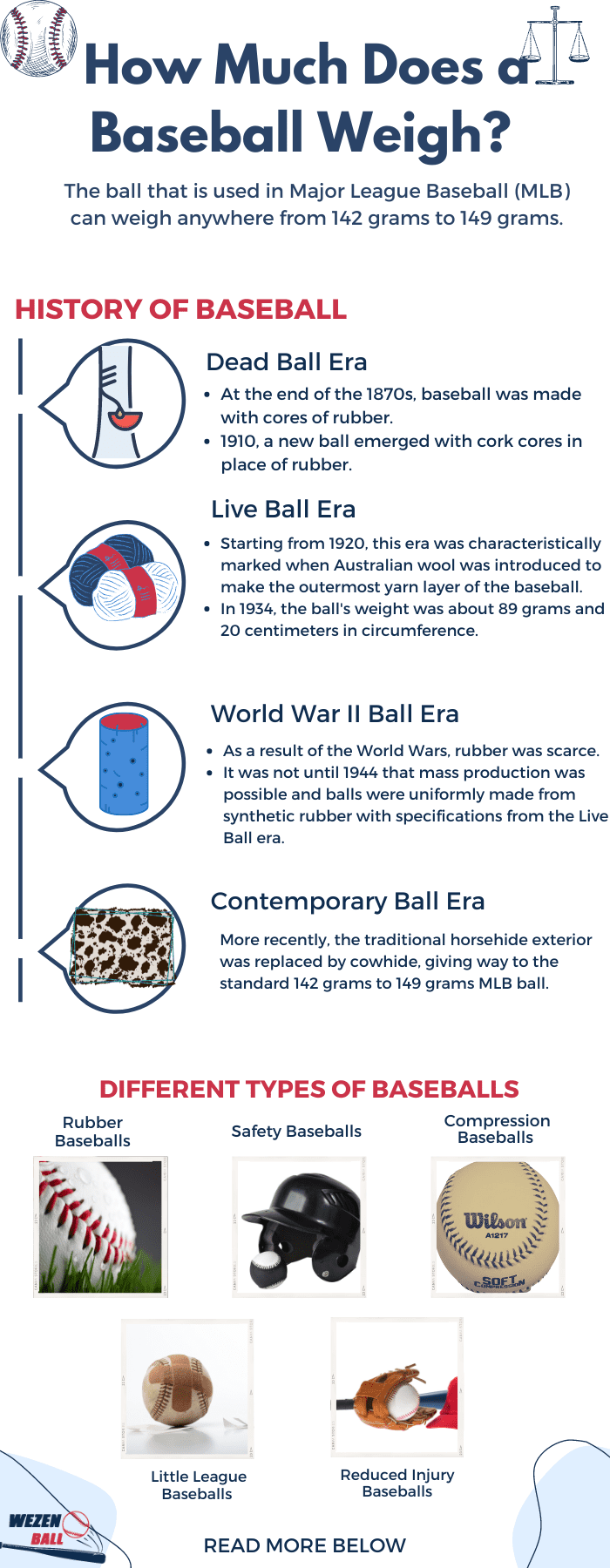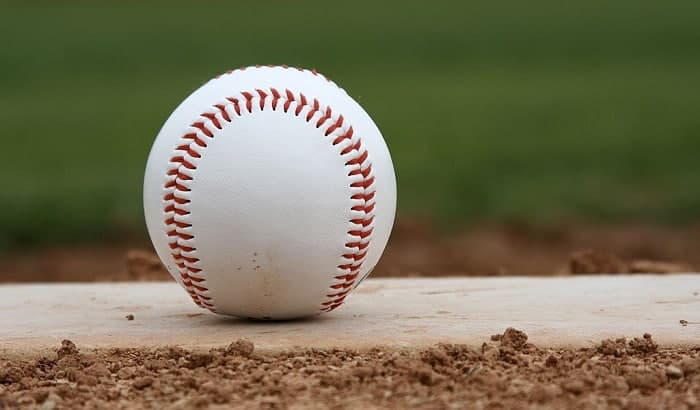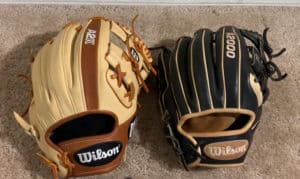If you are new to baseball and want to learn more, this article focusing on the baseball ball is a good place to start. We will begin by answering the question, “How much does a baseball weigh?” From there, we will branch out to other relevant information, such as the evolution of the baseball sizes and weights and the differences among types of baseballs.
The official baseball weight for MLB ranges between 142 grams and 149 grams. For proper proportionality, this weight pairs with a circumference of 229 millimeters to 235 millimeters and a diameter of 73 millimeters to 76 millimeters.
However, baseballs have not always been this way. Baseball as an established competitive sport began in 1876. Thus, the ball has gone through an extensive evolution since then.
Indeed, there is a lot to learn about this topic. If you are ready for a solid understanding of the average weight of a baseball and of the sport as a whole, continue reading!
Contents
How Much Does a Baseball Weigh?
The ball that is used in Major League Baseball (MLB) can weigh anywhere from 142 grams to 149 grams.
This weight is partially determined by the material of the modern baseball, which is a mixture of cork and rubber with a black rubber outer layer. On top of that, there is a shell of red rubber, which is ultimately covered by yarn.
In order to maintain fairness and integrity in all games, the weight of each ball used in the MLB is strictly monitored during manufacturing processes. However, because of the inevitable differences in raw materials and other external factors, the baseballs can not all be of the exact same single weight. Hence, there is a weight range from 142 to 149 grams instead.
You can watch more about how the official MLB is made here.
History of Baseball
Given the rich history of baseball as a sport, the ball that is the heart of the game also possesses a long-lasting history. The baseball that you know today is far from what was used in the past. In this section, we will take you through the different stages of the baseball ball’s evolution. In general, there are four eras: the Dead Ball, Live Ball, World War II, and Contemporary.
1. Dead Ball Era
In its beginning towards the end of the 1870s, the baseball was made with cores of rubber. Fun fact: pitcher A.G Spalding designed it. For a long time, this version of the ball was officially used in the league. Fast forward to 1910, a new ball emerged with cork cores in place of rubber.
Up until 1920, the same ball was used for an entire game and only replaced when unraveled. After this period, it was acknowledged that a dirt-covered ball posed vision challenges for players. Thus, any new balls were eligible for entrance throughout a single game.
2. Live Ball Era
Starting from 1920, this era was characteristically marked as when Australian wool was introduced to make the outermost yarn layer of the baseball. Later, In 1934, the ball manufacturing process was standardized by the American and National leagues. It was during this time that the weight of the ball was decided to be about 89 grams and 20 centimeters in circumference.
The layers of the ball, at this point, were: core, cushion, black rubber, red rubber, wool yarn, and tanned horsehide. The horsehide completed the exterior of the ball and accounted for about 9 grams of the total weight.
3. World War II Ball Era
As a result of the World Wars, rubber was scarce. Baseballs were considered non-essentials, so they did not have the much-needed raw material for construction. Manufacturers replaced rubber with granulated cork, creating a material known as balata. Essentially, this was two shells of cork wrapped to form the center.
Given the dynamic environment at the time, baseball was almost always changing. It was not until 1944 when mass-production was possible and balls were uniformly made from synthetic rubber with specifications from the Live Ball era.
4. Contemporary Ball Era
This is the version that we see today at the stadium or on television. There is a core made of cork and rubber, encased in black rubber, then red rubber, and an outermost coat of yarn.
More recently, the traditional horsehide exterior was replaced by cowhide, giving way to the standard 142 grams to 149 grams MLB ball.
Different Types of Baseballs
But, outside the MLB, there are other types of baseballs. They have their own distinct constructions and purposes. By this token, they also have varying weights. All of them, however, are lighter than the standard hard baseball in MLB games.
1. Rubber Baseballs
For example, there are rubber baseballs, which were first produced in the 1950s, in Japan. It came about as child-friendly variants that were much lighter than official MLB baseballs.
The rubber was considered a safe material for the youths engaging in this sport. Rubber baseballs are not very common in the United States, but their appearance is ubiquitous in many Japanese sporting events.
2. Safety Baseballs
Somewhat similar to the Japanese rubber baseball, this type of baseball is specifically designed for young players between 3 and 5 years old. They are lighter and softer with inexpensive synthetic materials. These baseballs pair with miniature lightweight aluminum bats.
3. Compression Baseballs
These are sometimes also referred to as soft baseballs. Statistically speaking, these baseballs are 93% softer than conventional hard baseballs. They are often recommended for rookie and junior players.
These are also selected by elders who enjoy baseball recreationally. Compression baseballs are covered by synthetic leather rather than cowhide. Going hand-in-hand with softness, these are lighter than the standard hard baseballs.
4. Reduced Injury Baseballs
As suggested in the name, these baseballs were produced to prioritize user’s safety. It features a poly-mixture core with different index levels for corresponding ages. Said index is known as “SEV”—short for severity.
In short, the levels are: tee, level one, level five, and level ten, based on the impact force of the baseball on the body. These baseballs are used mostly in practice and friendly games.
5. Little League Baseballs
To cater to younger players from 8 to 14 years old, the little league baseball weighs between 113 grams to 141 grams. Their cork is more cushioned and wrapped more loosely.
Nevertheless, they are just as hard and meet the standards set for the Minor League Baseball participants, which are approximately 264 teams. However, in 2019, MILB players in the more advanced Triple-A level also switched to the heavier MLB game balls.
Conclusion
So, with that, you have reached the end of this article on how much does a baseball weigh. To recap, the weight of an MLB baseball is between 142 grams and 149 grams.
However, there were many different weights in the past—corresponding with the different eras: Dead Ball era, Live Ball era, World War II era, and Contemporary era. Today, there is also a manifold of baseball variants with distinct weights to cater to a specific group of users and particular purposes.
If you have any other follow-up questions or thoughts on this topic, please do not be afraid to let us know in the comments. We are always super happy to hear from our readers. Also, feel free to share this article with others!

Five years as a baseball player, my training approaches with this game give me the motivation to inspire and support young players more. Like all sports, we should start with the desire to have fun and maintain our resilience to strive better at any competition. But, of course, some of us want to have some fun and train for better health. It does not matter what your initial purpose is; I believe that most people ever holding on to the baseball bat will fall in love with the games as I do.

















